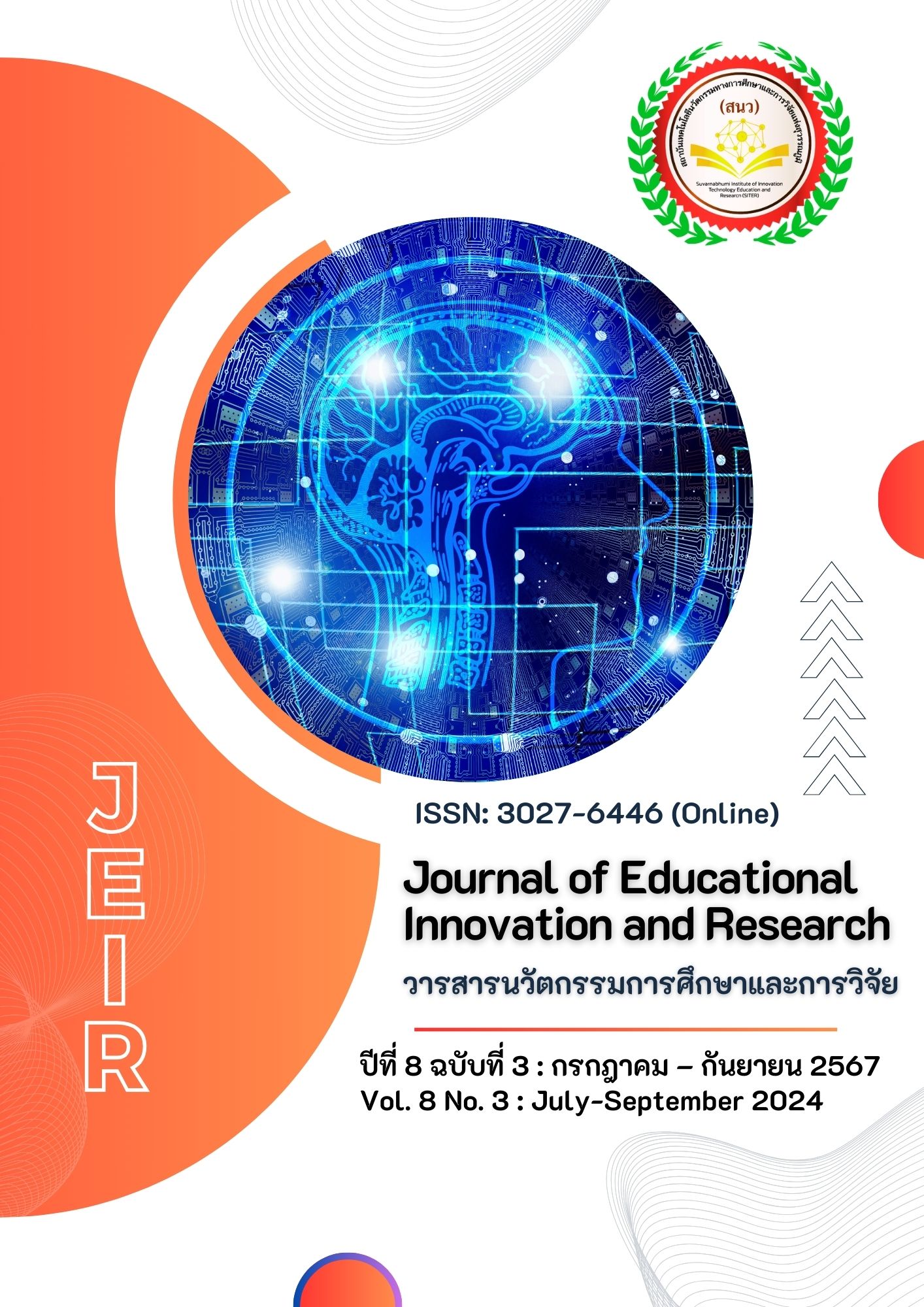การศึกษาเปรียบเทียบการตรวจพิสูจน์ลายนิ้วมือแฝงโดยนักเรียนที่ได้รับการอบรมและผู้ตรวจลายนิ้วมือแฝง
Main Article Content
บทคัดย่อ
บทความนี้มีวัตถุประสงค์เพื่อศึกษาผลการตรวจพิสูจน์รอยลายนิ้วมือแฝงระหว่างนักเรียนที่ได้รับการอบรมกับผู้ตรวจลายนิ้วมือแฝง ซึ่งเป็นการวิจัยเชิงปริมาณ ใช้แนวคิดของ Thompson (2012) เป็นกรอบการวิจัย พื้นที่วิจัย คือ ศูนย์พิสูจน์หลักฐาน 7 จังหวัดนครปฐม โดยแบ่งกลุ่มตัวอย่างเป็นนักเรียนที่ได้รับการฝึกอบรมด้านนิติวิทยาศาสตร์เบื้องต้น จำนวน 300 คน และผู้ตรวจลายนิ้วมือแฝงของสำนักงานพิสูจน์หลักฐานตำรวจ 5 คน การทดสอบแบ่งออกเป็นการทดสอบเบื้องต้นและการทดสอบเชิงลึก ในการตรวจจุดลักษณะสำคัญพิเศษของรอยลายนิ้วมือแฝง โดยแบบทดสอบเบื้องต้นให้ผู้เข้ารับการทดสอบตรวจลายนิ้วมือแฝงแบบเลือกคำตอบ 4 ตัวเลือก ในการตรวจรอยลายนิ้วมือแฝงจำนวน 10 ข้อส่วนแบบทดสอบเชิงลึกได้คัดเลือกผู้เข้ารับการทดสอบที่ทำคะแนนในแบบทดสอบเบื้องต้นได้เต็มมาแบบอิสระ ทำการสุ่มเลือกนักเรียนที่ได้รับการฝึกอบรมมา 5 คนและผู้ตรวจลายนิ้วมือแฝง 5 คน ผลการวิจัยพบว่านักเรียนที่ได้รับการฝึกอบรมสามารถทำแบบทดสอบลายนิ้วมือแฝงเบื้องต้นได้ถูกต้องทุกข้อเป็นจำนวน 110 คน (36.67 %) ในขณะที่ผู้ตรวจลายนิ้วมือแฝง ทั้ง 5 คน ทำแบบทดสอบได้ถูกต้องทุกข้อ (100 %) และเมื่อใช้แบบทดสอบแบบเชิงลึกในการตรวจจุดลักษณะสำคัญพิเศษของรอยลายนิ้วมือแฝง พบว่านักเรียนที่ได้รับการฝึกอบรมที่ทำคะแนนได้มากที่สุดนั้นตรวจรอยลายนิ้วมือแฝงถูกเป็นจำนวน 5 รอย (62.5%) ในขณะที่ผู้ตรวจลายนิ้วมือแฝงทั้ง 5 คน ตรวจรอยลายนิ้วมือแฝงได้ถูกต้องทั้งหมด 8 รอยทุกคน (100%) ผลการวิเคราะห์สรุปได้ว่าประสบการณ์ในการตรวจรอยลายนิ้วมือแฝงมีผลต่อการตรวจพิสูจน์รอยลายนิ้วมือแฝง สามารถทำให้ปฏิบัติงานตรวจพิสูจน์ได้ถูกต้องและแม่นยำ เพื่อนำไปใช้ในกระบวนการยุติธรรม
Article Details

อนุญาตภายใต้เงื่อนไข Creative Commons Attribution-NonCommercial-NoDerivatives 4.0 International License.
เอกสารอ้างอิง
Boonlert, J. (2022). Comparison of Latent Fingerprint Quality on Various Types of Paper Using Ninhydrin and Indanedione Followed by Ninhydrin. Journal of Criminology and Forensic Science, 8(1), 62-75. https://so02.tci-thaijo.org/index.php/forensic/article/view/252775
Busey, T. A., & Vanderkolk, J. R. (2005). Behavioral and electrophysiological evidence for configural processing in fingerprint experts. Vision Research, 45(4), 431-448. https://doi.org/10.1016/ j.visres.2004.08.021
Castello, A., Francés, F., & Verdú, F. (2013, 09/01). Solving underwater crimes: Development of latent prints made on submerged objects. Science & justice : journal of the Forensic Science Society, 53, 328-331. https://doi.org/10.1016/j.scijus.2013.04.002
Darshan, G. P., Prasad, B. D., Premkumar, H. B., Sharma, S. C., Kiran, K. S., & Nagabhushana, H. (2023). 20 - Fluorescent quantum dots as labeling agents for the effective detection of latent fingerprints on various surfaces. In N. Thejo Kalyani, S. J. Dhoble, M. Michalska-Domańska, B. Vengadaesvaran, H. Nagabhushana, & A. K. Arof (Eds.), Quantum Dots (pp. 539-574). Woodhead Publishing. https://doi.org/https://doi.org/10.1016/B978-0-323-85278-4.00006-4
Marriott, C., Lee, R., Wilkes, Z., Comber, B., Spindler, X., Roux, C., & Lennard, C. (2014, 2014/03/01/). Evaluation of fingermark detection sequences on paper substrates. Forensic Science International, 236, 30-37. https://doi.org/https://doi.org/10.1016/j.forsciint.2013.12.028
Stevenage, S. V., & Pitfield, C. (2016, 2016/10/01/). Fact or friction: Examination of the transparency, reliability and sufficiency of the ACE-V method of fingerprint analysis. Forensic Science International, 267, 145-156. https://doi.org/https://doi.org/10.1016/j.forsciint.2016.08.026
Thompson, M. B., & Tangen, J. M. (2014). The nature of expertise in fingerprint matching: experts can do a lot with a little. PLoS One, 9(12), e114759. https://doi.org/10.1371/journal.pone.0114759


